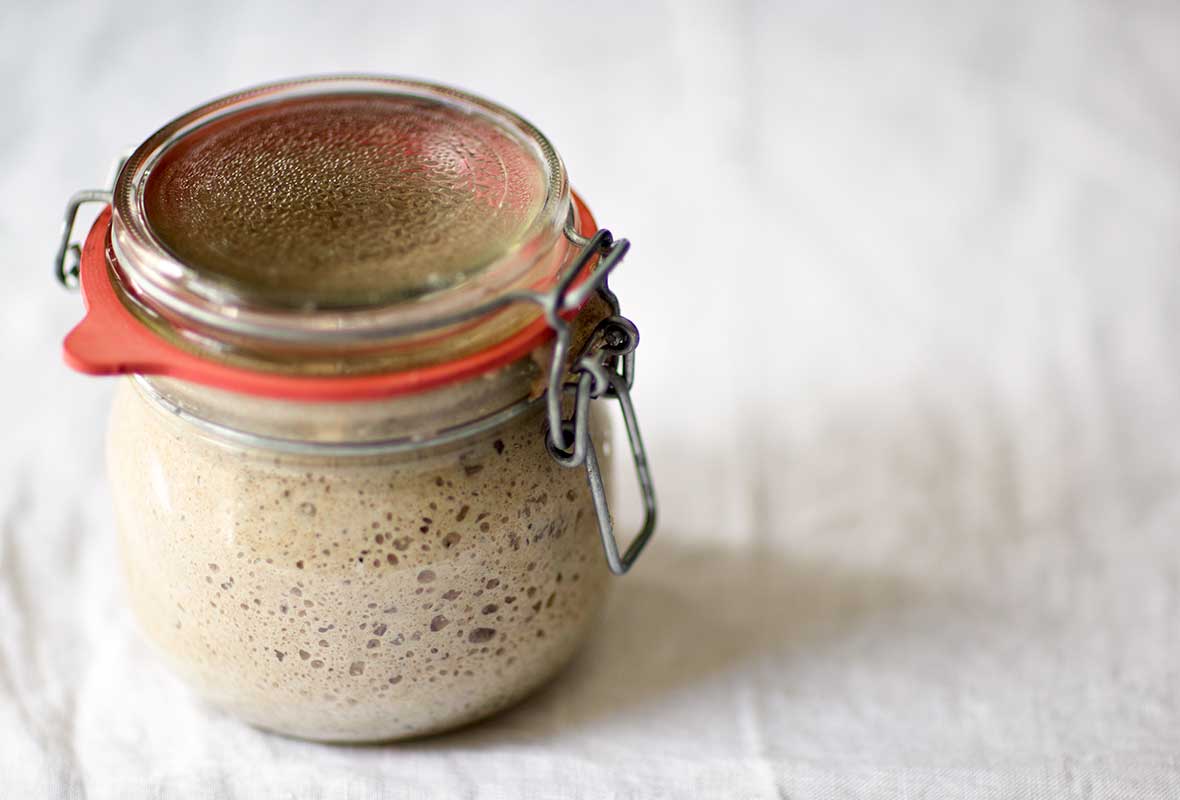
It’s not hard to make a rye sourdough starter from scratch. Some sourdough starters rely on wild yeasts that live in the air, others on acid-producing bacteria present in buttermilk, yogurt, pineapple juice, and the like, and still others start with commercial yeast or store-bought starters. Fact is, none of these additives is necessary. All it really takes to build a delicious and robust rye sour culture, or starter, is some whole-grain rye flour, water, a warm place, and patience. [Editor’s Note: And when your traditional rye sourdough starter is complete, the very first thing you’re going to want to do is use it to make this Galician rye bread.]–Stanley Ginsberg
☞ LEARN MORE, READ: HOW TO DRY SOURDOUGH STARTER
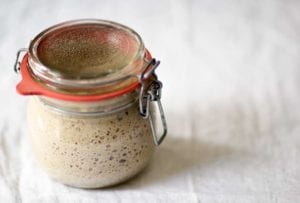
Rye Sourdough Starter
Ingredients
Day 1: Make the Rye Sourdough Starter
- 2.5 ounces whole grain rye flour, preferably organic
- 2.5 ounces warm water (105°F or 41°C)
Days 2 to 7: Refresh the Rye Sourdough Starter
- 2.5 ounces whole grain rye flour, preferably organic
- 2.5 ounces warm water (105°F or 41°C)
- 2.5 ounces Sour Starter from the preceding day
Days 8 and Beyond: Maintain the Rye Sourdough Starter
- 2.5 ounces medium or whole-grain rye flour, preferably organic
- 2.5 ounces warm water (105°F or 41°C)
- .25 ounces rye sourdough starter
Instructions
Day 1: Make the rye sourdough starter
- Start with equal amounts of organic rye flour and water by weight. Dump them in a nonreactive (glass, porcelain, stainless-steel, plastic) container, mix by hand into a stiff paste, cover, and let stand at room temperature (68 to 72°F or 20 to 22°C) for 24 hours.
☞ TESTER TIP: Occasionally the yeast normally present in whole grains fail to establish itself in a new culture; if, after 3 or 4 days, the culture darkens, develops a mold, or smells bad, dump the whole batch and start over. After a week, the culture, or sourdough starter, will be ready to use or to be stored refrigerated in an airtight container for a couple days. [Editor's Note: If storing the sourdough starter for more than a couple days, you'll need to maintain it, which we explain how to do just below.]
Days 2 to 7: Refresh the rye sourdough starter
- The next day, discard all but 2 1/2 ounces (70 grams) of the culture and mix the remainder with the refresh ingredients, cover, and let stand. Repeat each day, discarding all but 2 1/2 ounces (70 grams) of the preceding day’s culture.
☞ TESTER TIP: The most important point to remember at the early stages is to feed the sourdough starter daily. Even when it shows no apparent fermentation, the yeast is busy multiplying and consuming nutrients at a very high rate. By the second or third day, it will swell, show bubbles, and give off a clean sour smell. Over the next few days the activity will become more and more vigorous and the smell more intense.
Days 8 and Beyond: Maintain the rye sourdough starter
- In a perfect world—or in a working bakery—sourdough starters are refreshed daily. That said, daily feedings demand both a degree of dedication and abundant flour supplies that are impractical for all but the most committed home bakers. You can get by refreshing your starter every 36 hours or so.
- Mix the rye flour, water, and rye sourdough starter by hand until incorporated. Cover and ferment at room temperature (68 to 72°F or 20 to 22°C) overnight or for 10 to 12 hours. The sponge will be very bubbly, have a clean sour smell, and will have tripled in volume. Store refrigerated in an airtight container and it will last indefinitely.
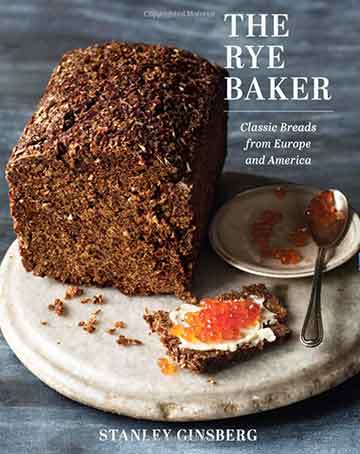
Nutrition
Nutrition information is automatically calculated, so should only be used as an approximation.
Recipe Testers’ Reviews
The rye starter was easy to make and quick. It took about 5 minutes each of the 7 days. Mine smelled great and seemed consistent after the week of feedings. I switched to the refresh amounts after that and it stayed nice and healthy.
During the buildup, you end up tossing about 2/3 of it away. I definitely recommend a scale versus just using volume measurements.


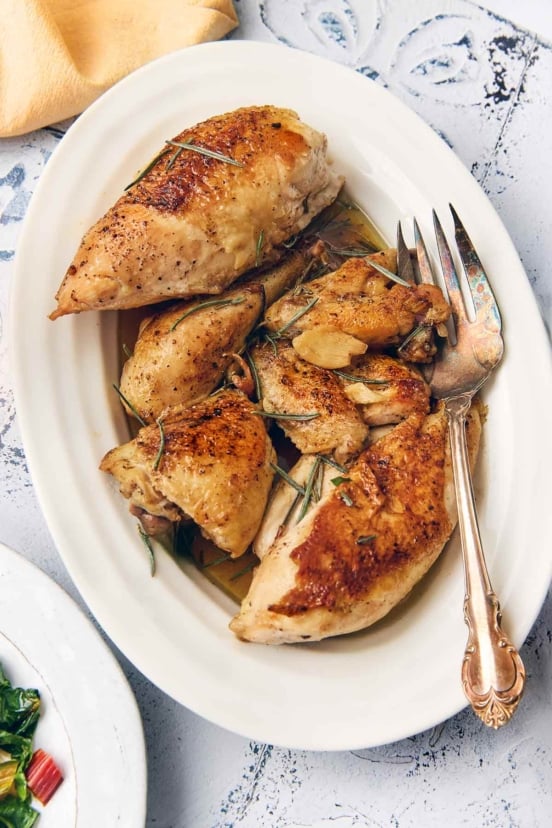
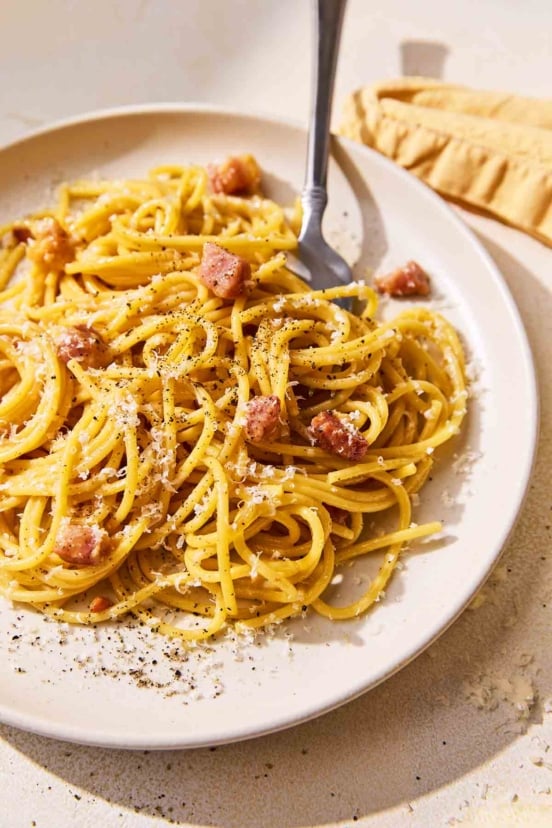









Hi David,
I started my starter 10 days ago. Due to the pandemic, I have had to swap out different flours based on what’s available. At this point, my starter has seen white unbleached flour, whole wheat flour and rye-which I figure is less than ideal. It still doesn’t pass the “float test” and I am nervous that it isn’t rising as much as most comments are saying. Usually it rises about half an inch and only a few bubbles appear on top. I have been leaving it in the microwave to maintain a warmer temperature (house is usually at 70 degrees). It smells quite fruity, almost like apricot and is beginning to have web-like features when I mix it, but is extremely sticky. Any suggestions? Thoughts on when it might be usable?
Chava, press on. It takes a while for both the starter and the starter parent (that’s you!) to get a sense of how it works. Each starter is unique. The different flours can contribute to some of the sluggishness somewhat.
Is the cover on tightly? The starter needs to get some of the wild yeast in the air. Maybe leave it out on the counter for a day or two covered with paper towel. Perhaps your microwave is spotless and sterile!
I’ve noticed my starter has developed a bit of a orangish pink color, it doesn’t smell bad just a bit sour, should I throw it out?
Emily, it should be fine. It could the type of flour your using. Are you using tap water? Is your water chlorinated or hard? That can sometimes mess with the starter.
Thank you 🙂 I am using city water but I will try buying filtered water and using that.
Emily, don’t use distilled water. Buy spring water.
I have developed my rye starter. It doubles when fed, though it does fall before I feed it. Does that mean I am not feeding it enough? Also, unsure what consistency it should be? I am using an organic, dark rye flour — consistency is a bit like frostingish, quick sticky/tacky, almost like glue! Hmmm. Thanks for any advice.
Heather, it falls because it’s noshed on everything you gave it! And that means it’s time for the next feeding.
The consistency is different from person to person depending upon the type of rye flour used. But that sound great. It’ll be ready to use when it’s gone through it 7 days and when it reaches its high mark.